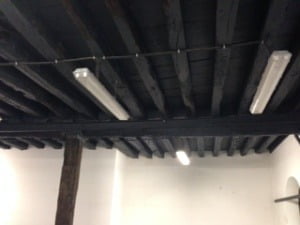
Fire Resistance of Wood Elements
Actualizado a fecha: 7 February, 2019
It is usual to find in old buildings reconstrucctions beams or wooden pillars that still maintain their carrying capacity so it is necessary to maintain them and protect them agains fire.
It is true that wood has a certain degree of contribution to a fire because it is a combustible material, but we also have to say that it behaves very well at high temperatures since it does not twist like the metallic structure, nor collapse without warning as it happens with the concrete. The disadvantage of the wood supporting elements is that when it produces a combustion, it loses the useful section by carbonation and it is shooting in the case of the beams or buckling in the case of the pillars until it collapses. it is also interesting to know that during this carbonation, the ash itself acts as a retarder, decreasing the rate of subsequent carbonation.
In case we want to make a new construction using wood or we have wood elements in an existing construction, we can go to the Eurocodes, calculate the minimum section required for that pillar or beam, see the section that we have left and by means of those speeds of carbonation that makes us the norm, we will be able to calculate how long it will resist that element to the fire, which means its “R” Load Capacity in minutes and may not have to be treated to increase its fire resistance.
In case pillars or wooden beams are not able to maintain their carrying capacity alone, it is usual to place metallic reinforcements. In this case we can protect this metal structure with protective layers as it is usually done, calculating its mass and studying the thickness of the protective layer necessary to provide the metal structure with the bearing capacity “R” to the fire.
When the fire resistance is higher or the beam sections are small, Mercor Tecresa has two different solutions commonly used for timber structures.
– On one hand we have the Tecwool F Mortar Protection, it adapts to a wide variety of supports, even when exposed to settlement vibrations or movements. It has a perfect adhesion and flexibility. It also has exceptional effects on sound and acoustic absorption in reverberation room. Moreover, the mortar acts as an excellent thermal insulator thanks to its thermal conductivity value.
– On the other hand we have the independant false ceiling EI-120 with a Tecbor Panel which is the most competitive and the lightest solution of the market